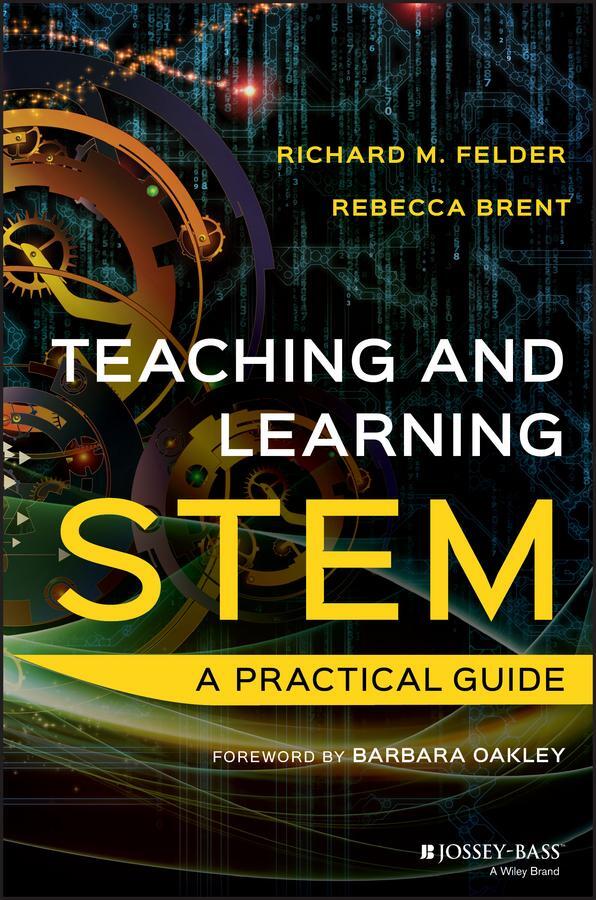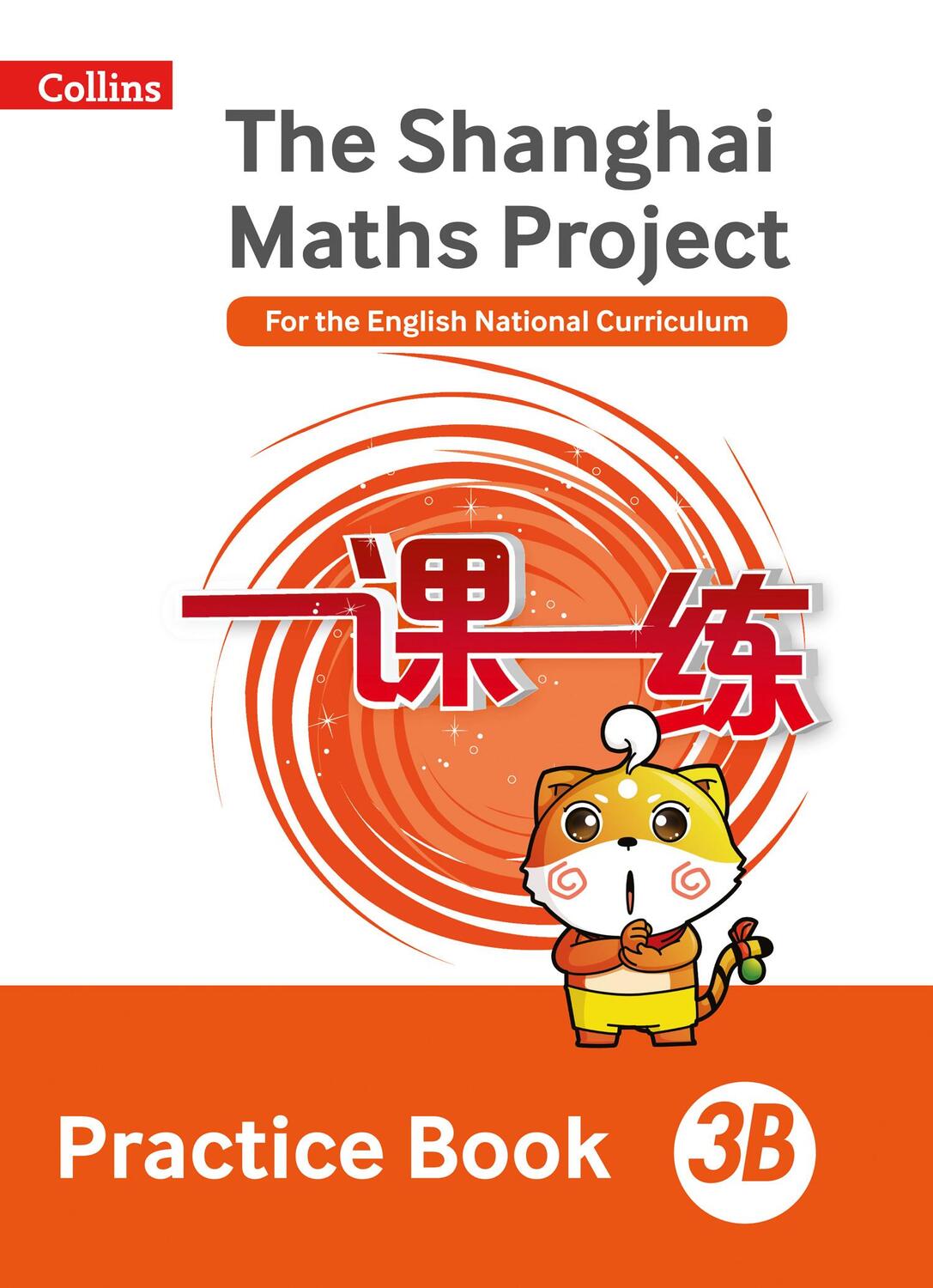47,00 €*
Versandkostenfrei per Post / DHL
Aktuell nicht verfügbar
Educational research has repeatedly shown that compared to traditional teacher-centered instruction, certain learner-centered methods lead to improved learning outcomes, greater development of critical high-level skills, and increased retention in science, technology, engineering, and mathematics (STEM) disciplines.
Teaching and Learning STEM presents a trove of practical research-based strategies for designing and teaching courses and assessing students' learning. The book draws on the authors' extensive backgrounds and decades of experience in STEM education and faculty development. Its engaging and well-illustrated descriptions will equip you to implement the strategies in your courses and to deal effectively with problems (including student resistance) that might occur in the implementation. The book will help you:
* Plan and conduct class sessions in which students are actively engaged, no matter how large the class is
* Make good use of technology in face-to-face, online, and hybrid courses and flipped classrooms
* Assess how well students are acquiring the knowledge, skills, and conceptual understanding the course is designed to teach
* Help students develop expert problem-solving skills and skills in communication, creative thinking, critical thinking, high-performance teamwork, and self-directed learning
* Meet the learning needs of STEM students with a broad diversity of attributes and backgrounds
The strategies presented in Teaching and Learning STEM don't require revolutionary time-intensive changes in your teaching, but rather a gradual integration of traditional and new methods. The result will be continual improvement in your teaching and your students' learning.
Educational research has repeatedly shown that compared to traditional teacher-centered instruction, certain learner-centered methods lead to improved learning outcomes, greater development of critical high-level skills, and increased retention in science, technology, engineering, and mathematics (STEM) disciplines.
Teaching and Learning STEM presents a trove of practical research-based strategies for designing and teaching courses and assessing students' learning. The book draws on the authors' extensive backgrounds and decades of experience in STEM education and faculty development. Its engaging and well-illustrated descriptions will equip you to implement the strategies in your courses and to deal effectively with problems (including student resistance) that might occur in the implementation. The book will help you:
* Plan and conduct class sessions in which students are actively engaged, no matter how large the class is
* Make good use of technology in face-to-face, online, and hybrid courses and flipped classrooms
* Assess how well students are acquiring the knowledge, skills, and conceptual understanding the course is designed to teach
* Help students develop expert problem-solving skills and skills in communication, creative thinking, critical thinking, high-performance teamwork, and self-directed learning
* Meet the learning needs of STEM students with a broad diversity of attributes and backgrounds
The strategies presented in Teaching and Learning STEM don't require revolutionary time-intensive changes in your teaching, but rather a gradual integration of traditional and new methods. The result will be continual improvement in your teaching and your students' learning.
RICHARD M. FELDER, PHD, is Hoechst Celanese Professor Emeritus of Chemical Engineering at North Carolina State University and author of the bestselling Wiley textbook Elementary Principles of Chemical Processes, now in its fourth edition. He is the inaugural recipient of the Lifetime Achievement Award in Engineering Education, presented in 2012 by the American Society for Engineering Education.
REBECCA BRENT, EdD, is President of Education Designs, Inc., a consulting firm in North Carolina, and is a certified educational program evaluator. Prior to her work in consulting, she was an associate professor of education at East Carolina University.
Separately and together, Drs. Felder and Brent have published over 300 papers and presented over 700 workshops and seminars on STEM education on campuses around the world.
Foreword
1. Introduction to college teaching
1.0. Welcome to the university, there's your office, good luck
1.1. Making learning happen
1.2. Learner-centered teaching: Definition, warning, and reassurance
1.3. What's in this book?
1.4. How to use the book
PART I: COURSE DESIGN
Interlude. What do they need to know?
2. Learning objectives: A foundation of effective teaching
2.0. Introduction
2.1. Writing and using course learning objectives
2.1.1. Scopes of learning objectives
2.1.2. Two keys to effective objectives: Clarity and observability
2.1.3. Using objectives as study guides
2.1.4. Why write objectives?
2.1.5. Objections and responses.
2.2. Bloom's Taxonomy of Educational Objectives
2.3. Addressing prerequisite requirements and learning outcomes
2.4. Ideas to take away
2.5. Try this in your course
Interlude. Good cop/bad cop: Embracing contraries in teaching
3. Planning courses
3.0. Introduction
3.1. Three steps to disaster, or, how not to approach a new course preparation
3.2. A rational approach to course preparation and redesign
3.3. Choosing a course text or content delivery system
3.4. Formulating a course grading policy
3.4.1. What should count toward the course grade, and by how much?
3.4.2. To curve or not to curve?
3.5. Writing a syllabus
3.6. The critical first week
3.6.1. Establish good relationships with and among your students
3.6.2. Motivate students to learn what you will be teaching
3.6.3. Establish effective communication with the students
3.6.4. Establish your policies and expectations and make them clear to the students
3.6.5. Test prerequisite knowledge and skills
3.6.6. Start using formative assessment
3.7. Ideas to take away
3.8. Try this in your course
Interlude. How to write class session plans (or anything else)
4. Planning class sessions
4.0. Introduction
4.1. Avoid common planning errors
4.2. What's in a class session plan?
4.3. Promote long-term memory storage, retrieval, and transfer of course content
4.4. Two cornerstones of effective class sessions
4.5. Plan good questions and activities
4.6. Don't turn classes into slide shows and verbal avalanches
4.7. Use handouts with gaps
4.8. Planning undergraduate laboratory courses
4.9. Ideas to take away
4.10. Try this in your course
PART II: COURSE IMPLEMENTATION
5. Elements of effective instruction
5.0. Introduction
5.1. Make class sessions effective
5.2. Make pre-class assignments effective
5.3. Don't be a slave to your session plans
5.4. Keep improving your teaching
5.5. Ideas to take away
5.6. Try this in your course
Interlude. Meet your students: Aisha and Rachel
6. Active learning
6.0. Introduction
6.1. What is active learning?
6.2. Structures and formats of activities
6.3. How well does active learning work? Why does it work?
6.4. Active learning for problem solving
6.5. Common mistakes
6.6. Common concerns
6.7. Active learning in recitations and flipped classrooms
6.8. Ideas to take away
6.9. Try this in your course
Interlude. Is technology a friend or foe of learning?
7. Teaching with Technology
7.0. Introduction
7.1. Instructional technology tools
7.2. Learning benefits of technology
7.3. Setting up communications
7.4. Integrating technology into instruction
7.5. Blended learning and flipped classrooms
7.6. Online courses
7.6.1. Active learning in online courses
7.6.2. Massive open online courses (MOOCs)
7.7. Ideas to take away
7.8. Try this in your course
Interlude. Meet your students: Michelle, Ryan, and Alex
8. Evaluating learning
8.0. Introduction
8.1. Short-format questions
8.1.1. Multiple-choice questions
8.1.2. Short-answer questions
8.2. Evaluating and promoting conceptual understanding
8.2.1. Teaching concepts
8.2.2. Misconceptions and ConcepTests
8.2.3. Concept inventories
8.3. Evaluating problem-solving skills
8.3.1. Designing assignments
8.3.2. Designing tests
8.3.3. Helping students learn how to prepare for and take problem-solving tests
8.3.4. Grading problem-solving tests
8.4. Evaluating reports and presentations
8.4.1. Grading forms: Checklists and rubrics
8.4.2. Constructing a grading form for your course
8.4.3. Using grading forms to promote skill development
8.4.4. Peer review
8.5. Ideas to take away
8.6. Try this in your course
PART III: SKILL DEVELOPMENT
Interlude. Meet your students: Stan and Nathan
9. Problem-solving skills
9.0. Introduction
9.1. The long steep path from novice to expert
9.2. Strategies for teaching expert problem-solving skills
9.2.1. Teach students to classify problems
9.2.2. Show the full problem-solving process, including metacognition
9.2.3. Use problem chunking and TAPPS to promote metacognition
9.2.4. Use repetition to promote automaticity
9.2.5. Use interleaving and overlearning to provide repetition
9.2.6. Promote your students' self-efficacy in the methods and skills you are teaching
9.3. A structure for complex problem solving
9.3.1. Define the problem
9.3.2. Explore the problem
9.3.3. Plan a solution
9.3.4. Implement the plan
9.3.5. Reflect on the solution
9.4. Problem-based learning
9.5. Ideas to take away
9.6. Try this in your course
Appendix: Steps 4 and 5 of waste treatment problem solution
Interlude. Meet your students: Dave, Megan, and Roberto
10. Professional skills
10.0. Introduction
10.1. How can professional skills be developed?
10.2. Communication skills
10.3. Creative thinking skills
10.3.1. Brainstorming and brainwriting
10.3.2. Explaining unexpected results
10.3.3. Formulating problems
10.3.4. Assessing creative thinking
10.4. Critical thinking skills
10.4.1. Make expectations clear
10.4.2. Provide structure, modeling, and practice
10.4.3. Assessing critical thinking
10.5. Self-directed learning skills
10.6. Project-based learning
10.7. Creating a supportive environment for professional skill development
10.8. Ideas to take away
10.9. Try this in your course
Interlude. Sermons for grumpy campers
11. Teamwork skills
11.0. Introduction
11.1. Cooperative learning
11.2. How should teams be formed?
11.2.1. Form teams yourself
11.2.2. Criteria for team formation
11.2.3. Team-forming procedures
11.2.4. Dissolving and reforming teams
11.3. What can teams be asked to do?
11.3.1. Problem sets
11.3.2. Team projects and Jigsaw
11.3.3. TBL, PLTL, and POGIL
11.4. Turning student groups into high-performance teams
11.4.1. Preview and explain your policies and expectations
11.4.2. Promote positive interdependence
11.4.3. Establish individual accountability
11.4.4. Get teams to monitor their own performance
11.4.5. CATME--An online teamwork support program
11.5. Dealing with difficulties
11.5.1. Defusing student resistance
11.5.2. Dealing with dysfunctional teams
11.6. Ideas to take away
11.7. Try this in your course
12. Learner-centered teaching revisited
12.0. Introduction
12.1. Aspects of student diversity
12.1.1. Demographic diversity
12.1.2. Approaches to learning
12.1.3. Levels of intellectual development
12.1.4. Learning styles
12.1.5. Teaching to address diversity
12.2. Inductive teaching and learning
12.2.1. What can students be asked to do?
12.2.2. Inductive teaching methods?
12.2.3. Implementation tips
12.3. Overview of learner-centered teaching
12.4. Last words
References
Index
| Erscheinungsjahr: | 2016 |
|---|---|
| Produktart: | Schulbücher |
| Rubrik: | Schule & Lernen |
| Medium: | Buch |
| Seiten: | 336 |
| Inhalt: | 336 S. |
| ISBN-13: | 9781118925812 |
| ISBN-10: | 1118925815 |
| Sprache: | Englisch |
| Einband: | Gebunden |
| Autor: |
Brent, Rebecca
Felder, Richard M. |
| Hersteller: |
John Wiley & Sons
John Wiley & Sons Inc |
| Maße: | 236 x 156 x 32 mm |
| Von/Mit: | Rebecca Brent (u. a.) |
| Erscheinungsdatum: | 06.05.2016 |
| Gewicht: | 0,534 kg |
RICHARD M. FELDER, PHD, is Hoechst Celanese Professor Emeritus of Chemical Engineering at North Carolina State University and author of the bestselling Wiley textbook Elementary Principles of Chemical Processes, now in its fourth edition. He is the inaugural recipient of the Lifetime Achievement Award in Engineering Education, presented in 2012 by the American Society for Engineering Education.
REBECCA BRENT, EdD, is President of Education Designs, Inc., a consulting firm in North Carolina, and is a certified educational program evaluator. Prior to her work in consulting, she was an associate professor of education at East Carolina University.
Separately and together, Drs. Felder and Brent have published over 300 papers and presented over 700 workshops and seminars on STEM education on campuses around the world.
Foreword
1. Introduction to college teaching
1.0. Welcome to the university, there's your office, good luck
1.1. Making learning happen
1.2. Learner-centered teaching: Definition, warning, and reassurance
1.3. What's in this book?
1.4. How to use the book
PART I: COURSE DESIGN
Interlude. What do they need to know?
2. Learning objectives: A foundation of effective teaching
2.0. Introduction
2.1. Writing and using course learning objectives
2.1.1. Scopes of learning objectives
2.1.2. Two keys to effective objectives: Clarity and observability
2.1.3. Using objectives as study guides
2.1.4. Why write objectives?
2.1.5. Objections and responses.
2.2. Bloom's Taxonomy of Educational Objectives
2.3. Addressing prerequisite requirements and learning outcomes
2.4. Ideas to take away
2.5. Try this in your course
Interlude. Good cop/bad cop: Embracing contraries in teaching
3. Planning courses
3.0. Introduction
3.1. Three steps to disaster, or, how not to approach a new course preparation
3.2. A rational approach to course preparation and redesign
3.3. Choosing a course text or content delivery system
3.4. Formulating a course grading policy
3.4.1. What should count toward the course grade, and by how much?
3.4.2. To curve or not to curve?
3.5. Writing a syllabus
3.6. The critical first week
3.6.1. Establish good relationships with and among your students
3.6.2. Motivate students to learn what you will be teaching
3.6.3. Establish effective communication with the students
3.6.4. Establish your policies and expectations and make them clear to the students
3.6.5. Test prerequisite knowledge and skills
3.6.6. Start using formative assessment
3.7. Ideas to take away
3.8. Try this in your course
Interlude. How to write class session plans (or anything else)
4. Planning class sessions
4.0. Introduction
4.1. Avoid common planning errors
4.2. What's in a class session plan?
4.3. Promote long-term memory storage, retrieval, and transfer of course content
4.4. Two cornerstones of effective class sessions
4.5. Plan good questions and activities
4.6. Don't turn classes into slide shows and verbal avalanches
4.7. Use handouts with gaps
4.8. Planning undergraduate laboratory courses
4.9. Ideas to take away
4.10. Try this in your course
PART II: COURSE IMPLEMENTATION
5. Elements of effective instruction
5.0. Introduction
5.1. Make class sessions effective
5.2. Make pre-class assignments effective
5.3. Don't be a slave to your session plans
5.4. Keep improving your teaching
5.5. Ideas to take away
5.6. Try this in your course
Interlude. Meet your students: Aisha and Rachel
6. Active learning
6.0. Introduction
6.1. What is active learning?
6.2. Structures and formats of activities
6.3. How well does active learning work? Why does it work?
6.4. Active learning for problem solving
6.5. Common mistakes
6.6. Common concerns
6.7. Active learning in recitations and flipped classrooms
6.8. Ideas to take away
6.9. Try this in your course
Interlude. Is technology a friend or foe of learning?
7. Teaching with Technology
7.0. Introduction
7.1. Instructional technology tools
7.2. Learning benefits of technology
7.3. Setting up communications
7.4. Integrating technology into instruction
7.5. Blended learning and flipped classrooms
7.6. Online courses
7.6.1. Active learning in online courses
7.6.2. Massive open online courses (MOOCs)
7.7. Ideas to take away
7.8. Try this in your course
Interlude. Meet your students: Michelle, Ryan, and Alex
8. Evaluating learning
8.0. Introduction
8.1. Short-format questions
8.1.1. Multiple-choice questions
8.1.2. Short-answer questions
8.2. Evaluating and promoting conceptual understanding
8.2.1. Teaching concepts
8.2.2. Misconceptions and ConcepTests
8.2.3. Concept inventories
8.3. Evaluating problem-solving skills
8.3.1. Designing assignments
8.3.2. Designing tests
8.3.3. Helping students learn how to prepare for and take problem-solving tests
8.3.4. Grading problem-solving tests
8.4. Evaluating reports and presentations
8.4.1. Grading forms: Checklists and rubrics
8.4.2. Constructing a grading form for your course
8.4.3. Using grading forms to promote skill development
8.4.4. Peer review
8.5. Ideas to take away
8.6. Try this in your course
PART III: SKILL DEVELOPMENT
Interlude. Meet your students: Stan and Nathan
9. Problem-solving skills
9.0. Introduction
9.1. The long steep path from novice to expert
9.2. Strategies for teaching expert problem-solving skills
9.2.1. Teach students to classify problems
9.2.2. Show the full problem-solving process, including metacognition
9.2.3. Use problem chunking and TAPPS to promote metacognition
9.2.4. Use repetition to promote automaticity
9.2.5. Use interleaving and overlearning to provide repetition
9.2.6. Promote your students' self-efficacy in the methods and skills you are teaching
9.3. A structure for complex problem solving
9.3.1. Define the problem
9.3.2. Explore the problem
9.3.3. Plan a solution
9.3.4. Implement the plan
9.3.5. Reflect on the solution
9.4. Problem-based learning
9.5. Ideas to take away
9.6. Try this in your course
Appendix: Steps 4 and 5 of waste treatment problem solution
Interlude. Meet your students: Dave, Megan, and Roberto
10. Professional skills
10.0. Introduction
10.1. How can professional skills be developed?
10.2. Communication skills
10.3. Creative thinking skills
10.3.1. Brainstorming and brainwriting
10.3.2. Explaining unexpected results
10.3.3. Formulating problems
10.3.4. Assessing creative thinking
10.4. Critical thinking skills
10.4.1. Make expectations clear
10.4.2. Provide structure, modeling, and practice
10.4.3. Assessing critical thinking
10.5. Self-directed learning skills
10.6. Project-based learning
10.7. Creating a supportive environment for professional skill development
10.8. Ideas to take away
10.9. Try this in your course
Interlude. Sermons for grumpy campers
11. Teamwork skills
11.0. Introduction
11.1. Cooperative learning
11.2. How should teams be formed?
11.2.1. Form teams yourself
11.2.2. Criteria for team formation
11.2.3. Team-forming procedures
11.2.4. Dissolving and reforming teams
11.3. What can teams be asked to do?
11.3.1. Problem sets
11.3.2. Team projects and Jigsaw
11.3.3. TBL, PLTL, and POGIL
11.4. Turning student groups into high-performance teams
11.4.1. Preview and explain your policies and expectations
11.4.2. Promote positive interdependence
11.4.3. Establish individual accountability
11.4.4. Get teams to monitor their own performance
11.4.5. CATME--An online teamwork support program
11.5. Dealing with difficulties
11.5.1. Defusing student resistance
11.5.2. Dealing with dysfunctional teams
11.6. Ideas to take away
11.7. Try this in your course
12. Learner-centered teaching revisited
12.0. Introduction
12.1. Aspects of student diversity
12.1.1. Demographic diversity
12.1.2. Approaches to learning
12.1.3. Levels of intellectual development
12.1.4. Learning styles
12.1.5. Teaching to address diversity
12.2. Inductive teaching and learning
12.2.1. What can students be asked to do?
12.2.2. Inductive teaching methods?
12.2.3. Implementation tips
12.3. Overview of learner-centered teaching
12.4. Last words
References
Index
| Erscheinungsjahr: | 2016 |
|---|---|
| Produktart: | Schulbücher |
| Rubrik: | Schule & Lernen |
| Medium: | Buch |
| Seiten: | 336 |
| Inhalt: | 336 S. |
| ISBN-13: | 9781118925812 |
| ISBN-10: | 1118925815 |
| Sprache: | Englisch |
| Einband: | Gebunden |
| Autor: |
Brent, Rebecca
Felder, Richard M. |
| Hersteller: |
John Wiley & Sons
John Wiley & Sons Inc |
| Maße: | 236 x 156 x 32 mm |
| Von/Mit: | Rebecca Brent (u. a.) |
| Erscheinungsdatum: | 06.05.2016 |
| Gewicht: | 0,534 kg |











